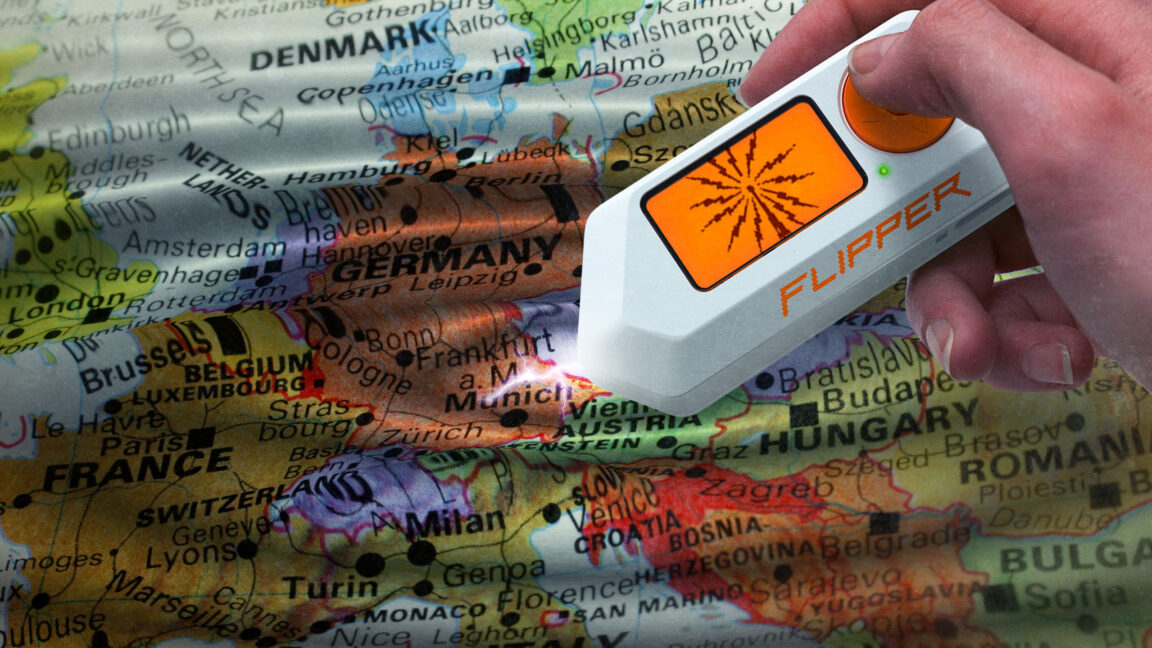We may earn revenue from the products available on this page and participate in affiliate programs. Learn more ›
Updated Nov 17, 2022 12:55 PM
The best voice recorders are convenient and portable tools. They can document lectures, interviews, conversations, and any other environmental audio you may want to listen back to later. Unlike magnetic tape designs of yesteryear, today’s voice recorders record to internal flash media or SD cards to deliver better file organization and compatibility with computers. Voice recorders range widely in terms of audio quality; some designs are capable of recording wide stereo sound at high bitrates, while others excel at capturing compressed audio and speech alone. Knowing the difference can profoundly affect your listening experience. If you’re looking for a quick solution for capturing audio on the go, the best voice recorders will have your back and make sure you don’t miss a single detail.
- Best for lectures: Akaluli Digital Voice Recorder
- Best for interviews: Sony ICD-PX470 Digital Voice Recorder
- Best digital: Zoom H1n Portable Recorder
- Best voice-activated: SciTech Mini Digital Voice Activated Recorder
- Best for iPhone: Shure MOTIV MV88 Condenser Microphone
How we picked the best voice recorders
Since they’re often used for capturing live discussions, interviews, and lectures in critical scenarios with the intent to review and playback, we selected the best voice recorders that have a quick startup time and an easy-to-use interface.
Most of our picks have the ability to record with the single press of a button, which ensures that you don’t miss out on any details when capturing audio. We also aimed to include voice recorders that are small and portable, which is an important design consideration that helps users travel light and draws less attention to the fact that they’re recording in the first place.
The most compact picks on our list tend to record lower-quality files, while those that are relatively bulkier have the ability to record high-fidelity audio. In making sure the entire spectrum of audio quality is represented, this list is able to accommodate everything from the most casual recording applications to critical production situations.
Best for lectures: Akaluli Digital Voice Recorder
Why it made the cut: This voice recorder doubles as a pen, allowing users to jot down notes while reviewing their recordings.
Specs:
- Memory: 32 GB
- Weight: 0.6 ounces
- Recording Format: WAV
| Pros: | Cons: |
|
|
|
|
|
|
|
|
|
|
|
When it comes to note-taking, it can be difficult and cumbersome to keep pace with speakers and lecturers whether you’re typing on a computer or writing in a notebook. This best voice recorder for lectures from Akaluli looks like something straight out of a spy movie and aims to offer a streamlined note-taking process that covers all the bases. It’s a working ballpoint pen, but there’s a 32-gigabyte digital voice recorder inside. Users can begin recording audio of their surroundings with a single press of the top button, and the onboard memory can store roughly 400 hours of audio before requiring a file cleanup.
Compared to other best voice recorders, this unit excels at being both discreet and easy to use. It’s literally a ballpoint pen, so it blends in with any office environment, and it offers convenient features like one-touch recording, automatic file organization, and automatic saving in the event of low battery. It comes with a USB cable as well as a small pair of earbuds, so users can enjoy full functionality right out of the box without the need to purchase extra items.
If you anticipate needing a voice recorder with expandable storage, a pen recorder isn’t the best option. It’s limited to the 32GB of built-in storage. This pen recorder also sports LED indicator lights for recording status and battery status, but these can’t be turned off at will, so some users may find them disruptive in dark environments.
Best for interviews: Sony ICD-UX570 Digital Voice Recorder
Why it made the cut: Expandable storage and quick-charging features make this pocket-sized recorder a good option for frequent use on short notice.
Specs:
- Memory: Up to 32 GB
- Weight: 4.8 ounces
- Recording Format: WAV, MP3, WMA, M4A
| Pros: | Cons: |
|
|
|
|
|
|
|
|
|
This compact voice recorder from Sony features automatic file organization and a handy selection of onboard controls. The design makes it the best voice recorder for interviews. Key among its front-panel buttons are two playback navigation buttons. One fast-forwards ten seconds, and the other rewinds three seconds. This functionality combined with the unit’s automatic file labeling system allows users to review recordings quickly and efficiently, making this a good tool for transcribing interviews and other spoken-word recordings.
Other standout features of this design include a headphone jack for playback and 55-hour battery life. Unfortunately, you’ll need to keep a set of AAA batteries around, since the recorder doesn’t have rechargeable ones. The external microphone input appeals to users who want more control over their recordings. When using the unit’s onboard stereo microphones, users have the option to toggle between normal stereo, wide-field, and focused recording modes. When it’s time to transfer files to the computer, this voice recorder has its own USB connector that pops out and retracts with a simple switch.
Best digital: Zoom H1n Portable Recorder
Why it made the cut: The H1n is a rugged portable recorder built by an industry-leading audio company that features easy controls and 90-degree stereo recording.
Specs:
- Memory: Up to 32 GB
- Weight: 2.4 ounces
- Recording Format: WAV, MP3
| Pros: | Cons: |
|
|
|
|
|
|
|
|
|
|
|
Zoom portable recorders are well-known in the audio and video production industry as a great option for capturing audio on-site at events due to their relatively high durability and sound quality. The H1n aims to pack this reputation into a compact and affordable digital recorder that can be used for a wide variety of purposes from concerts and musical sampling to interview and lecture recording. Because it has a high volume limit and records in resolutions of up to 24-bit/96 kHz, this is the best digital voice recorder to consider if sound quality is your primary concern.
Design-wise, the H1n has a relatively streamlined user interface and a monochrome display that are controllable via a series of buttons on the front panel. It has one-touch recording and automatic distortion prevention, which are key features that help this recorder excel in settings where setup time is limited or non-existent.
Its array of two condenser microphones record in a fixed X/Y stereo configuration, allowing users to pick up a wide field of audio without any adjustment required, and these microphones are protected within a cage that’s integrated into the body of the recorder.
The H1n’s plastic construction allows it to be portable and lightweight. Ideally, the H1n should be mounted on a stand using its built-in threaded mount, but if you need to operate it in handheld mode, consider wrapping the body in a microfiber cloth or other type of dampening material. The H1n also operates using traditional AAA batteries, which can feel slightly inconvenient and antiquated in terms of portability, but it does prevent the need to stop and charge up when the battery runs out. That’s another reason pros like it.
Best voice-activated: SciTech Mini Digital Voice Activated Recorder
Why it made the cut: At only 0.19 inches in thickness, this compact card-shaped recorder is one of the best options for taking notes on the fly.
Specs:
- Memory: 32 GB
- Weight: 3.2 ounces
- Recording Format: MP3
| Pros: | Cons: |
|
|
|
|
|
|
|
|
|
|
|
If you require hands-free operation of a voice recorder for reasons of safety or convenience, this best voice-activated recorder from SciTech can do the job. It’s smaller than a credit card. It uses a single on-and-off switch to manually start and stop recording. A separate button can be held down to place the unit into voice-activated mode. Voice-activated recording prevents memory cards from filling with silence and gaps. It also doesn’t require any user intervention during the recording process. That makes it useful for intermittent note-taking and recording in a variety of multitasking scenarios.
This voice recorder fully charges in a single hour via an included USB cable that can also be used to transfer files to a computer after recording. An onboard DSP chip offers some measure of noise reduction to voice recordings, but this can’t be turned off. That limits recording to speech only for optimal sound. The recorder’s 32-gigabyte capacity and default MP3 recording format allow it to hold up to 360 hours of material at a time, which is plenty for note-taking purposes, but bear in mind that its limited user interface and controls make onboard playback of such a large quantity of audio somewhat impractical.
Best for iPhone: Shure MOTIV MV88 Condenser Microphone
Why it made the cut: This Lightning-powered condenser microphone is a compact and convenient option for traveling light and recording files straight to your smartphone.
Specs:
- Memory: Uses smartphone storage
- Weight: 1.28 ounces
- Recording Format: WAV
| Pros: | Cons: |
|
|
|
|
|
|
|
|
This convenient, iPhone-powered microphone from Shure is the best voice recorder for an iPhone and a great way to improve the quality of your smartphone’s sound recording without the need for a separate voice recorder. It requires the downloadable Shure MOTIV app, which gives users access to all recording functionality as well as a host of DSP options including noise reduction, limiting, compression, and EQ.
Due to its ability to record high-quality audio and apply post-processing effects via an app, the MV88 falls somewhere between a classic voice recorder and a portable audio production setup, making it a particularly good option for acquiring polished audio that’s intended for production purposes.
Users can adjust the stereo width of their recordings via the app to tailor their recording in a variety of acoustic settings. The microphone itself can also rotate on its hinge up to 90 degrees in either direction, which offers some additional customization of directionality. The MV88 also includes a robust removable windscreen to help capture quality recordings in outdoor settings, which is a feature that’s often sold separately when it comes to the best voice recorders.
The ability to use your smartphone eliminates the need for a separate device and allows the use of your device’s touchscreen for controls, but there are a few limitations that come with this convenience. Due to its app-controlled nature and smartphone-powered design, the MV88 can’t function as a standalone unit.
Additionally, it occupies the Lightning port on your phone, so you’ll lose the ability to keep your device charged while using the MV88. Notifications can also interrupt recordings and create unwanted noise, so airplane mode is a must.
Things to Consider Before Buying a Voice Recorder
Audio quality
Manufacturers often save space on voice recorders by recording at lower bitrates and in compressed formats. This is usually fine for note-taking applications and transcription purposes, but if you want to use your recorded audio in a production setting, go with a voice recorder that records in high-quality formats like the Zoom H1n or the Sony ICD-UX570. Bear in mind that the higher the quality in which you’re recording, the faster you’ll run out of storage space.
Type of recording
The human voice occupies a specific frequency range, which is why certain technologies including noise-cancelling headphones and smartphone microphones are particularly good at separating it from background noise. If you’re recording speech primarily for note-taking purposes, consider a voice recorder like the SciTech Mini Digital Voice Activated Recorder that automatically enhances speech while ignoring background noise.
Capacity
Voice recorders with higher storage capacities are better suited for the unpredictable conditions of remote recording, whether you’re conducting interviews, recording concerts, or sampling environmental audio. If you’ll be using your voice recorder for sustained periods in offsite locations, consider a design that uses SD cards or other removable media to ensure that you don’t run out of space when you need it. The Zoom H1n is particularly good for this type of use, or you can opt for the Sony ICD-UX570, which has its own dedicated internal memory plus SD card compatibility.
Discreet form factor
If you’re looking to record audio without drawing attention to that fact, a traditional voice recorder may not make the cut. Products like the Akaluli Digital Voice Recorder and the SciTech Mini Digital Voice Activated Recorder can record high-quality audio while remaining relatively inconspicuous, which can help put interviewees at ease and improve the quality of your interactions.
Editing software
While this guide is dedicated to the hardware you’ll need to create recordings, you should make sure the one you choose supports the MP3 or AAC audio formats. These common formats are compatible with all free or paid audio editors and media players for Windows and MacOS. Selecting higher quality audio formats like FLAC, ALAC, or AIFF will eat up more space, which means your recorder wont be able to hold as many recordings.
FAQs
Q: How do I choose a good voice recorder?
Voice recorders are fairly simple devices that consist of microphones, playback and recording controls, and file storage systems. The best voice recorders are set apart by portability and ease of use, which saves users time and allows them to place their focus on the conversation or lecture at hand.
Q: How much do voice recorders cost?
This all depends on how much you’re willing to spend, but voice records should cost less than $100.
Q: What’s the difference between dictaphone and voice recorder?
“Dictaphone” is a trademark that once belonged to a company founded by Alexander Graham Bell that manufactured the first-ever dictation machines. A voice recorder is essentially an up-to-date version of what the dictaphone used to be, that is, a device that records speech and plays it back for later review.
Q: What is the best voice recorder for students?
Most students will benefit from a voice recorder that’s lightweight and has a relatively high capacity for holding multiple hours’ worth of recordings. The Sony ICD-UX570 is a good choice thanks to its combination of internal memory and SD card compatibility as well as its long battery life.
Where should I store my voice recorder?
Voice recorders can be stored in a backpack or desk drawer without being damaged, just be sure to keep it charged.
How do I transfer data from a voice recorder to my computer?
This depends on the voice recorder. In some cases you can plug it directly into your computer, in other cases you’ll need to eject a memory card from the recorder and insert it into your computer.
How long can a voice recorder record continuously?
This depends on the size of its internal storage or memory card. Voice recorders with a high amount of storage can record for several hours at a time.
Do voice recorders come with built-in software?
Voice recorders have limited software that allow you to begin and end recordings, and in some cases check your volume levels or other basic data.
Do voice recorders have headphone jacks?
Yes, most voice recorders have headphone jacks, which allow you to monitor your audio in realtime.
How much memory does a voice recorder have?
This varies from recorder to recorder, but the ones that have internal storage have several gigabytes of free space.
Final thoughts on the best voice recorders
Voice recorders are a helpful tool for eliminating the challenge of sustained note-taking and listening, allowing people involved in lectures, conversations, and interviews to remain engaged. When it’s time to review your audio, the best voice recorders also offer easy playback functions to make transcription a breeze. If you’re looking for a convenient way to create recordings, make notes, or keep tabs on the go, a dedicated voice recorder can do all the heavy lifting for you.















